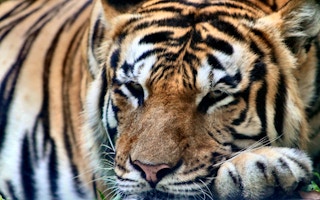A thick-thumbed bat, a colour-changing lizard, and a Muppet-looking orchid are just a few of the 380 new-to-science species found and described in the Greater Mekong region of Southeast Asia between 2021 and 2022.
In a report released this week by WWF, researchers highlight the remarkable diversity in this underexplored hotbed of life. The report documents the collaborative efforts of hundreds of scientists who ventured into Cambodia, Laos, Myanmar, Thailand and Vietnam to survey the biodiversity there in what is sometimes called the Indo-Burma hotspot. They identified 290 plant, 19 fish, 24 amphibian, 46 reptile and one mammal species.
“These remarkable species may be new to science but they have survived and evolved in the Greater Mekong region for millions of years, reminding us humans that they were there a very long time before our species moved into this region,” said K. Yoganand, WWF-Greater Mekong regional wildlife lead. “We have an obligation to do everything to stop their extinction and protect their habitats, and help their recovery.”
The report highlights several notable new species, including the Cambodian blue-crested agama (Calotes mystaceus), an aggressive lizard known for changing colour to defend itself against predators.
The Suzhen’s krait (Bungarus suzhenae), an extremely venomous snake named after Bai Su Zhen, a snake goddess from a popular traditional Chinese myth, the Legend of White Snake, was described in 2021.
Another find is the Hayes’ thick-thumbed myotis (Myotis hayesi), a bat with unique fleshy thumbs that distinguish it as a separate species. A preserved specimen of the bat had been stored in a Hungarian museum for 20 years before its identification.
The report also mentions Khoi’s mossy frog (Theloderma khoii), so named for its mossy-green skin that allows it to blend in with lichens and moss. Additionally, scientists described the miniature orchid Dendrobium fuscifaucium, which displays vibrant pink and bright yellow colours reminiscent of the Muppets who sang the song “Mah na mah na.”
However, many of these newly described species already face the threat of extinction due to human activity, prompting WWF to call for increased protection of their habitats by regional governments.
“
While the Mekong region is a global biodiversity hotspot, it is also experiencing a vast array of threats. We must continue to invest in the protection and conservation of nature, so these magnificent species don’t disappear before we know of their existence.
Nilanga Jayasinghe, Asian species manager, WWF-US
For instance, Cleyera bokorensis, an evergreen shrub, is threatened by the development of a Cambodian casino. Likewise, the Thai crocodile newt (Tylototriton thaiorum) in Vietnam is threatened by agricultural encroachment, logging, and its use in traditional medicine.
“To reverse the rapid biodiversity loss in the region, more concerted, science-based, and urgent efforts need to be made, and conservation measures need more attention from governments, NGOs and the public,” said Truong Q. Nguyen, one of the report authors from the Institute of Ecology and Biological Resources at the Vietnam Academy of Science and Technology.










